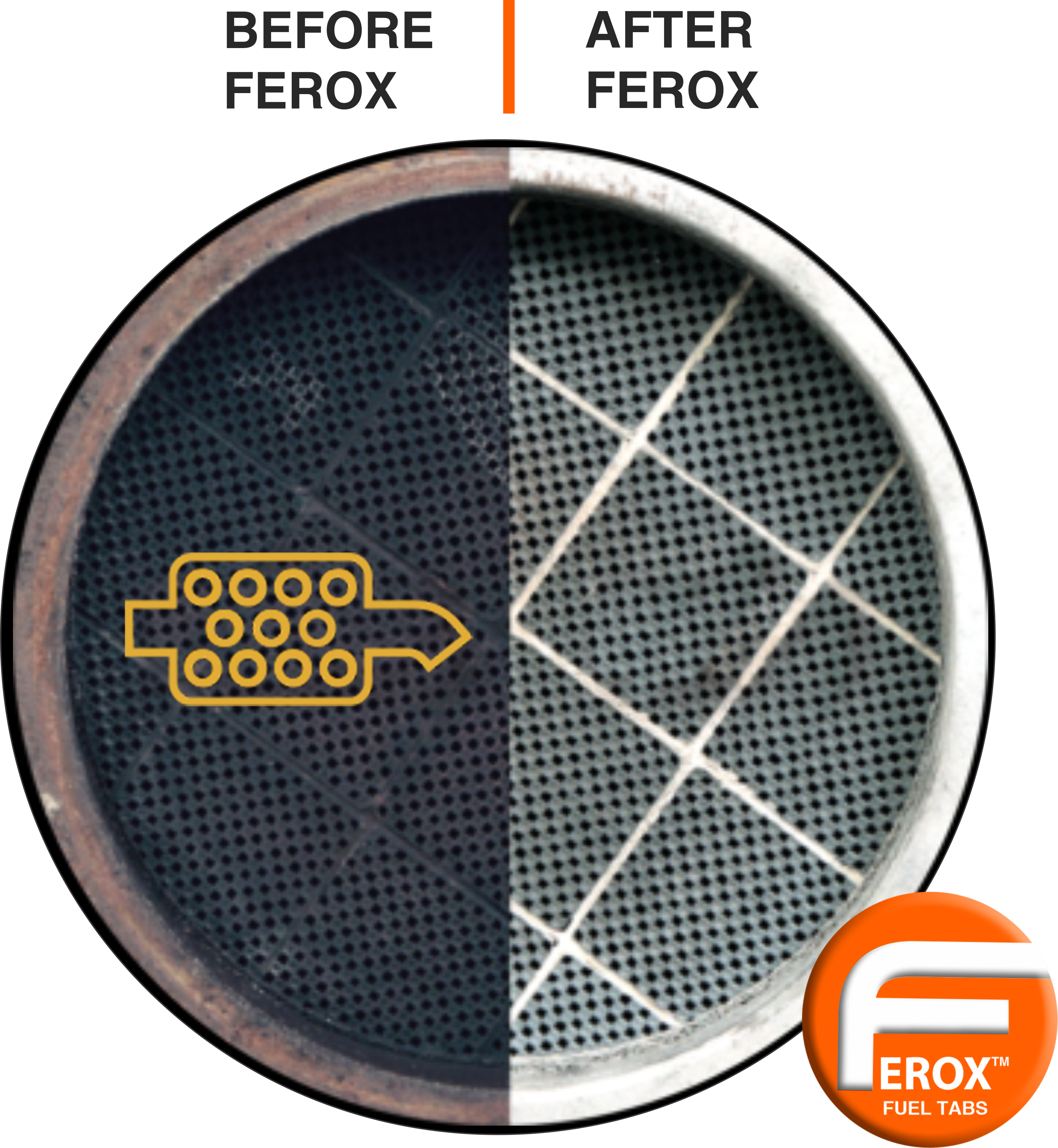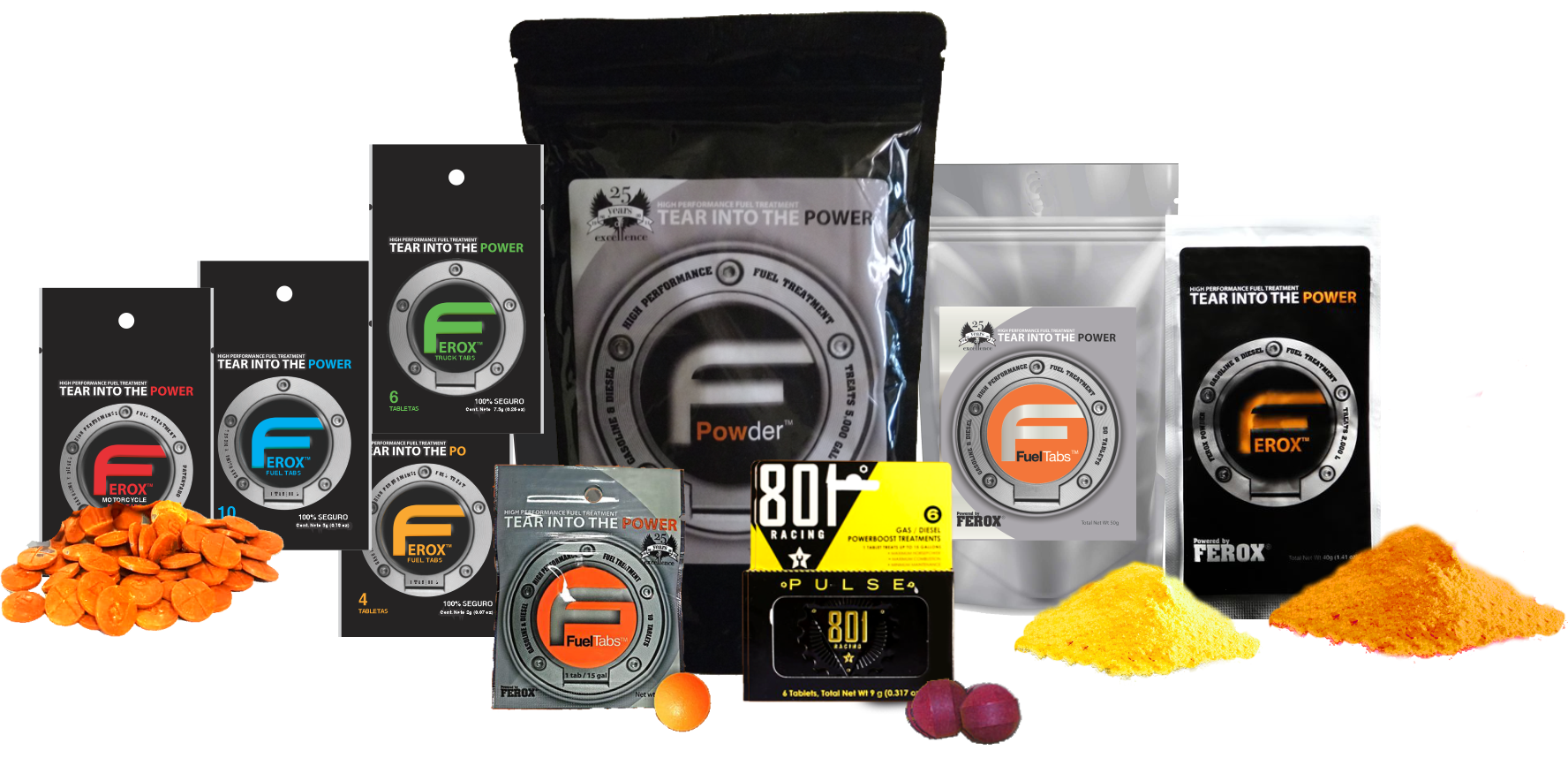
Reduced Maintenance Costs and Added Value
Using our solid fuel combustion catalyst formulations will help reduce operating and maintenance costs for a wide variety of fuel applications. From lawn mowers, motorcycles, cars, tractor trailers, yachts, ships, generators, boilers to burners, using RENNSLI fuel catalyst additives will result in measurable savings in fuel consumption, extended oil and engine life, mechanical longevity, reduced maintenance costs and other value-added benefits.
Improving Mechanical Longevity
Our specialized FEROX and 801 RACING solid fuel combustion additive formulas include a proprietary combustion catalyst that has a direct impact on the mechanical life of your engine or equipment. With a corrosion inhibitor, our formulas work to prevent the development of corrosion in your fuel tank and engine by coating metallic surfaces and protecting them from contact with corrosive agents. in addition, our formulas also include a lubricity enhancer that extends the life of your engine by reducing wear on the moving parts of your equipment. This lubricant compound is responsible for reducing unwanted, harsh mechanical friction that can damage your engine or equipment.
With the FEROX/801RACING combustion catalyst, increased efficiency means less wear and tear on equipment, improved reliability and a smaller carbon footprint, and has been proven to reduce harmful by-products of incomplete combustion such as iron and soot. These contaminants can build up in your engine and contaminate your oil, leading to increased friction, wear and ultimately overwhelming maintenance costs.

Extends Oil and Engine Life

Benefits of Carbon Deposits Removal
With continuous use of FEROX, carbon deposits are removed and prevented from forming in the burner or combustion chamber, and in the fuel injector, FEROX interacts with the ends of the aromatic chains and the bonds of the primary fuel particles, leaving no free bonds for the primary particles to agglomerate during combustion and form new carbon deposits.
Removal of injector coking is critical to ensure optimal fuel “atomization” and injector spray patterns in the cylinder, which contributes to more fuel being burned in the engine and less emissions in the exhaust; less carbon and deposits also increases oil and spark plug life and contributes to less engine wear or lower maintenance costs.
FEROX has a high cost-benefit ratio because, in addition to preventing and eliminating the problem of carbon deposits, it is a product that generates savings and added value such as: reduced fuel consumption, reduced pollutant emissions, increased horsepower and torque, protection and extension of the life of the catalytic converter and the diesel particulate filter (DPF), protection of the turbocharger, longer oil and engine life.

The use of Ferox greatly reduces particulate emissions (up to 80%) and reduces the burning temperature of the remaining soot, resulting in fewer exhaust particles (PM-opacity-smoke-soot) and less time to achieve regeneration.
These particulates are the cause of most diesel particulate filter (DPF) and regeneration problems.
FEROX improves DPF (Diesel Particulate Filter) regeneration performance, increasing the operating window for passive regeneration and reducing the time and diesel consumption for active regeneration.
Benefits of NOx reduction
Deposits directly affect the factors responsible for NOx formation, supporting a direct link between NOx emissions and deposits. This relationship is further supported by the fact that a clean engine running on Ferox treated fuel produces very low levels of NOx.
Fuel has a limited amount of energy that is released through the production of CO2. Ferox promotes the formation of CO2 during the combustion phase.
The combination of lower exhaust temperatures, faster heat transfer and less available excess oxygen, along with the removal of deposits, results in a significant reduction in the amount of NOx emissions produced.
Newer generation diesel-powered vehicles and equipment have an advanced post-combustion active emission control technology system based on the catalytic hydrolysis of urea that reduces tailpipe emissions of nitrogen oxides (NOx) to near-zero levels, called Selective Catalytic Reduction (SCR).

Selective Catalytic Reduction (SCR) and Diesel Exhaust Fluid (DEF/AdBlue/ARLA 32/AUS 32) start a chemical reaction that converts nitrogen oxides (NOx) to nitrogen, water and minute amounts of carbon dioxide (CO2), natural components of the air we breathe, reducing nitrogen oxides (NOx) to NEAR ZERO levels.
The system uses approximately 2% DEF to fuel consumption (every 50 gallons of fuel uses 1 gallon of DEF).
FEROX reduces nitrogen oxide (NOx) emissions and provides savings and value by protecting and extending the life of Selective Catalyst Reduction (SCR) and reducing DEF (Diesel Exhaust Fluid) consumption by up to 50%.

Fuel Property Advantages
Fuel Stabilizer
By incorporating a fuel stabilizer, RENNSLI Fuel Catalyst Additives can stabilize fuel for up to 12 months.
This means you do not have to worry about stored fuel that is not used frequently.
If left untreated, natural processes such as oxidation can take place leading to the development of fuel particulates/contaminants. These particulates/contaminants can cause premature filter plugging and wear.

Increased Fuel Lubricity
RENNSLI recently began evaluating the effect of its technology on fuel lubricity. Although RENNSLI is still in the early stages of testing fuel lubricity improvements, initial results are positive.
9.8% – 24.4% (40100 micron) wear scar improvement in diesel fuel lubricity Certificate of Analysis. SGS North America Inc., Oil, Gas and Chemical Services. March 17, 2015.
RENNSLI Fuel Catalyst Additives have been developed with our customers in mind. Our goal is to create an all-purpose fuel catalyst additive that provides a range of benefits to you and your equipment. The proven breadth of benefits and features that come with their use make our line of fuel catalyst additives a premier choice that will both increase performance and reduce overall engine operating costs for our customers.

For more information click the links to see our Technical Bulletins:

Recent Comments